Inflatable vs. Hard Paddle Board
Whether you’re a paddle pro or just getting your feet wet, there’s a big decision every enthusiast faces: Inflatable SUPs or Rigid Paddle Boards? It’s not just about picking any board; it’s about finding the right companion for your water adventures. So, let’s jump in and explore the world of SUPs together!
Paddle boarding isn’t just a sport; it’s an experience, a way to connect with nature, and a fantastic workout rolled into one. The feeling of standing on water, gliding smoothly over the surface, is nothing short of magical. But as the sport has grown, so has the variety of boards available. This diversity is wonderful, but it can also be overwhelming. By thoroughly exploring the insights provided in this comprehensive guide, you will empower yourself to uncover the stand-up paddleboard that not only aligns seamlessly with your individual preferences but also caters precisely to your unique needs.
In a nutshell:
Inflatable Stand Up Paddle Boards: Your go-to for easy transport, storage, and versatility. Ideal for those who value convenience and are on the move.
Rigid Paddle Boards: The choice for performance enthusiasts. These boards offer superior speed and stability but require more space and effort to transport.
Let’s dive deeper and discover which type of board will be the perfect match for your paddling style and adventures!
Contents
- Portability: The Key Advantage of Inflatable SUPs
- Performance Showdown: The Superiority of Rigid Paddleboards
- Pricing Insights: Evaluating Your Options
- Storage Solutions: Choosing the Right SUP for Limited Spaces
- Durability Analysis: Which SUP Stands the Test
- Repair and Maintenance: A Practical Guide
- Weight: A Key Factor in Stand Up Paddle Board Selection
- Safety Considerations in SUP Paddle Board Use
- Final Thoughts: Guiding Your Paddle Boards Selection
Portability: The Key Advantage of Inflatable SUPs
When it comes to the convenience of getting your board from point A to B, inflatable stand up paddle boards really shine. Let’s chat about why these boards are often hailed as the champions of SUP Portability. Whether you’re trekking to a hidden alpine lake, jetting off to a tropical destination, or just squeezing everything into a compact car for a weekend getaway, inflatable SUP make life easier.
Travel-Friendly Features of Inflatable SUP Board
Imagine a paddle board that fits into a backpack. That’s the reality with inflatables and a paddle board backpack. They deflate to the size of a sleeping bag, making them a breeze to carry. Traveling with them is a dream. They can be checked in on flights, tucked into the trunk of your car, or even strapped to a bike. Their lightweight nature means you’re more explorer than pack mule on your adventures. Setting up is part of the fun – it’s like inflating a sense of adventure. Within minutes, your compact bundle transforms into a sturdy, buoyant board ready for action.

It’s exciting to imagine effortlessly strapping on a paddle board and hitting the road.
Challenges with Transporting Hard Paddle Boards
They’re typically longer and bulkier, requiring a roof rack or a larger vehicle for transportation. If you’re short on space or drive a smaller car, this can pose a challenge. Storage at home is another factor. Unless you have a garage or a dedicated space, keeping a SUP board rigid can be like playing a game of spatial Tetris.
In this showdown of Inflatable vs Rigid SUP, the inflatable paddleboards clearly take the trophy for portability. They’re about making life easier, so you spend less time worrying about logistics and more time paddling and enjoying the great outdoors.

To optimize the transportation of rigid boards, consider factoring in additional expenses for accessories like roof racks or other necessary equipment.
Performance Showdown: The Superiority of Rigid Paddleboards
As inflatable technology advances, continuous innovation in materials and construction techniques has markedly elevated the performance of inflatable paddle boards, effectively closing the gap with their rigid counterparts. Despite these strides, the inherent merits of rigid stand-up paddleboards endure, solidifying their status as unrivaled champions in overall performance. Key advantages persistently favor rigid paddleboards.
Undoubtedly, hard paddle board excel in speed and stiffness. The solid build facilitates seamless navigation through water, resulting in superior speed when compared to their inflatable counterparts. This stiffness not only enhances stability and responsiveness but also delivers a remarkably smooth ride, making solid paddleboard the preferred choice for enthusiasts prioritizing peak performance.
These advantages become even more evident for those inclined towards aggressive surfing or competitive events. The precision and control inherent in hard paddle board, particularly in demanding conditions, outshine their inflatable counterparts, positioning them as the unequivocal preference for enthusiasts aspiring to attain competitive excellence.
Pricing Insights: Evaluating Your Options
Overall, inflatable paddle boards have a slight advantage over hard boards price-wise. While there are models in a wide variety of price ranges for both iSUPs and hard boards, the best inflatables are typically cheaper than the best rigid boards. But, it’s not just about the sticker price; we need to consider value for money, durability, and even potential additional costs. So, let’s break down what you can expect financially from each type of board.
Inflatable SUPs generally offer a more wallet-friendly entry point into the world of paddle boarding. Here’s why:
- The manufacturing process for inflatables often makes them less expensive to produce than their rigid counterparts.
- They often come as part of a package deal, including accessories like a pump, a carrying bag, and sometimes even a paddle. This means you’re getting more bang for your buck right from the get-go.
But don’t be fooled into thinking cheaper means lower quality. Many inflatable boards are built to last, offering excellent durability (we’ll touch more on that later). Now, let’s shift our gaze to Rigid Stand Up Paddle Boards:
- They typically come with a higher price tag. The materials (like fiberglass, carbon fiber, or wood) and the manufacturing process contribute to this cost.
- Additionally, you might need to factor in the cost of accessories (which often aren’t included), storage solutions, and transportation gear like roof racks.
It’s not just about the initial purchase price. Think about the long-term investment and what you’re getting for your money. An inflatable might be more budget-friendly and better suited for casual, everyday use, whereas a hard paddle board, with its higher upfront cost, could be the choice for those committed to performance or specific paddle boarding activities.
Presented below is a succinctly crafted table designed to encapsulate essential considerations for your reference:
Inflatable vs. Rigid SUP Price Comparison
| Aspect | iSUP | Solid Paddle Board |
|---|---|---|
| Price | Typically $400 to $800 USD | Generally $700 to $2000 USD |
| Manufacturing Process | Less expensive production | Higher cost due to materials and process |
| Package Deal | Often includes accessories | Accessories may not be included |
| Durability | Built to last, offering good durability | Durability depends on materials used |
| Additional Costs | Minimal potential additional costs | May require extra expenses for accessories, storage, and transportation gear |
| Long-Term Investment | Budget-friendly option for casual use | Higher upfront cost; suited for specific needs |
| Suitability | Better for casual, everyday use | Suited for performance or specific activities |
Storage Solutions: Choosing the Right SUP for Limited Spaces
Storage – it’s a practical consideration that often gets overlooked in the excitement of choosing a new paddle board. But let’s face it, not everyone has the luxury of abundant storage space. This is where the type of board you choose – Inflatable SUP vs. Rigid Paddle Board – can make a significant difference. Let’s explore the Paddle Board Storage Solutions for each type.
Inflatable SUP Boards:
- One of the biggest perks of an inflatable SUP is that when deflated, it rolls up into a compact size, fitting neatly into a carrying bag. This means you can store it in places like a closet, under your bed, or even in the trunk of your car.
- For those living in apartments or homes with limited space, the ability to tuck your SUP away in a small corner is a game-changer. It eliminates the need for dedicated storage systems or large free spaces.
Hard SUP boards:
- SUP Boards Rigid require significantly more space. Unless you have a garage or a dedicated gear shed, finding a spot in your home for a long, hard board can be tricky.
- You might need to get creative – think wall mounts or ceiling hoists. But remember, these solutions also require installation and enough room to safely maneuver the board in and out.
In the context of Inflatable vs Rigid SUP, if you’re tight on space or value the convenience of easy storage, an inflatable board is undoubtedly the way to go. However, if you have the space and are focused on performance, a solid sup boards is a viable option, provided you’re prepared for the storage commitment it entails.

Needing to consider the necessity of having ample space at home to store a large rigid paddleboard.
Durability Analysis: Which SUP Stands the Test
When considering the durability of inflatable SUPs and hard boards, many would immediately assume that rigid boards are the clear winners in this category. It may come as a surprise that a well-built inflatable SUP will actually be more durable and better able to withstand serious abuse than a traditional hard board.
Due to the fact that they are cumbersome and more difficult to transport, rigid SUPs are exposed to more bumps and knocks and can easily get dinged and cracked. By design, an iSUP is completely ding proof and able to withstand being dropped off of balconies and run over with a vehicle — extreme durability tests that no rigid board could possibly survive.
Inflatable paddle boards are actually constructed with the same tough material that bombproof whitewater rafts are made out of. Instead of sustaining damage when coming into contact with rocks, sticks, and other obstacles, an iSUP will literally bounce right off.

In the face of challenging rocky waters, the durability of an inflatable paddleboard is on par with that of a rigid paddleboard.
Repair and Maintenance: A Practical Guide
As far as repairs go, this is another category that goes to iSUPs. When a fiberglass and epoxy hard board gets dinged or cracked, it’ll usually require a professional shop repair that is expensive and time-consuming. Also, if water saturates the foam core, there are many cases where a damaged rigid board gets worse over time and just isn’t the same after having been repaired.
Repairing an inflatable SUP that has been damaged is a much different story. An iSUP that has been punctured or torn can be quickly and easily patched at home using the materials provided by your board manufacturer in the included repair kit. Be sure to check out our in-depth inflatable paddle board repair guide for step-by-step instructions on this process.

Maintaining rigid SUP boards involves a greater investment of time and effort.
Weight: A Key Factor in Stand Up Paddle Board Selection
Discover the pivotal role that weight plays in the dynamic world of paddle boarding, influencing everything from transportation to on-water handling. In the ongoing debate between Inflatable and Rigid Stand-Up Paddleboards (SUPs), the board’s weight emerges as a decisive factor for paddlers. Let’s delve into how the weight of Inflatable SUPs and Rigid Paddle Boards can shape your choices.
One of the most enticing features of inflatable standup paddle boards lies in their remarkable lightness. Unlike their rigid counterparts, most inflatable boards are significantly lighter, making them a top choice for individuals who may find carrying a heavier board challenging. This lightweight quality goes beyond mere ease of carrying; it directly translates to reduced effort required during board launch and retrieval. Additionally, for travelers, a lighter board simplifies logistics, especially when dealing with airline weight restrictions.
Rigid boards, often constructed from materials like fiberglass, wood, or carbon fiber, tend to be heavier. While this weight contributes to enhanced stability and performance in specific water conditions, it also introduces challenges in terms of transportation and handling. This is especially noticeable for smaller or less experienced paddlers. The weight of a rigid board becomes a critical factor, particularly when planning to carry it over longer distances or dealing with limited storage space that necessitates lifting the board.
Here’s a simple table outlining the potential difference in weight between general inflatable paddle boards (iSUPs) and rigid paddle boards in the market:
Inflatable vs. Solid Paddle Board: Weight & Features
| Aspect | Inflatable Paddle Board (ISUP) | Rigid Paddle Board |
|---|---|---|
| Weight | Typically 22-30 pounds (10-14 kg) | Generally 25-35 pounds (11-16 kg) |
| Advantages | Easy to carry and transport | Heavier for stability |
| Portability | Inflatable boards are more portable | Rigid boards may be bulkier |
| Storage and Transport | Convenient for storage and travel | May require more effort |
| Ideal Use Cases | Suitable for travel and diverse locations | Well-suited for specific water activities |
| Considerations | Prone to wind due to lighter weight | May need more effort to transport |
Safety Considerations in SUP Paddle Board Use
Prioritizing safety is crucial in any water sport, including paddle boarding. When comparing Inflatable SUPs and Rigid Paddle Boards, it’s essential to assess their impact on water safety. Let’s explore the safety aspects of both board types to ensure a secure and enjoyable paddling experience.
Inflatable boards provide a softer surface, reducing the impact of falls, making them ideal for beginners, children, or those cautious about potential accidents. Their buoyancy and stability make them a reassuring choice for less confident swimmers or newcomers to paddle boarding.
Conversely, rigid boards excel in speed and maneuverability, offering superior control in challenging conditions and a safety advantage for experienced paddlers. However, the hard surface increases the risk of injury in falls, especially in waves or near rocks.
Both Inflatable and Rigid SUPs have safety benefits. Inflatables are beginner-friendly, catering to families and those concerned about falls. Rigid boards, suited for performance and experienced paddlers, demand caution but provide superior control in challenging conditions.
Final Thoughts: Guiding Your Paddle Boards Selection
As we paddle towards the conclusion of our journey through the world of Stand Up Paddle Boards, it’s clear that both Inflatable SUPs and Rigid Paddle Boards have their unique strengths and attractions. Your final decision boils down to what you value most in your paddle boarding experience. Let’s recap and set you on the right course for Choosing a Paddle Board that’s perfect for you.
Inflatable SUPs: The Verdict
- If you prioritize SUP Portability, storage convenience, and a more forgiving platform in case of falls, inflatable boards are a fantastic choice. They’re especially suitable for beginners, those with limited storage space, or paddlers who love to travel with their board.
- Their versatility, ease of transport, and increasing performance capabilities make them a highly practical choice for most casual paddlers and adventurers.
Rigid Paddle Boards: The Verdict
- For those who put performance first – be it speed, maneuverability, or tackling challenging conditions – rigid boards are the way to go. They cater well to experienced paddlers, racers, and wave surfers.
- While they require more consideration in terms of transport and storage, their superior performance on the water can be well worth the extra effort for performance-focused paddlers.
Regardless of what you ultimately choose, we hope that you thoroughly enjoy your new board and that it serves you well for many years to come. Happy paddling!
Need even more reasons to choose an inflatable SUP over a hard board? Check out our ‘Top 7 Reasons to Buy an Inflatable SUP Instead of a Hard Board’.
Ready to look into some inflatable paddle boards? Check out our extensive collection of inflatable SUP boards here!






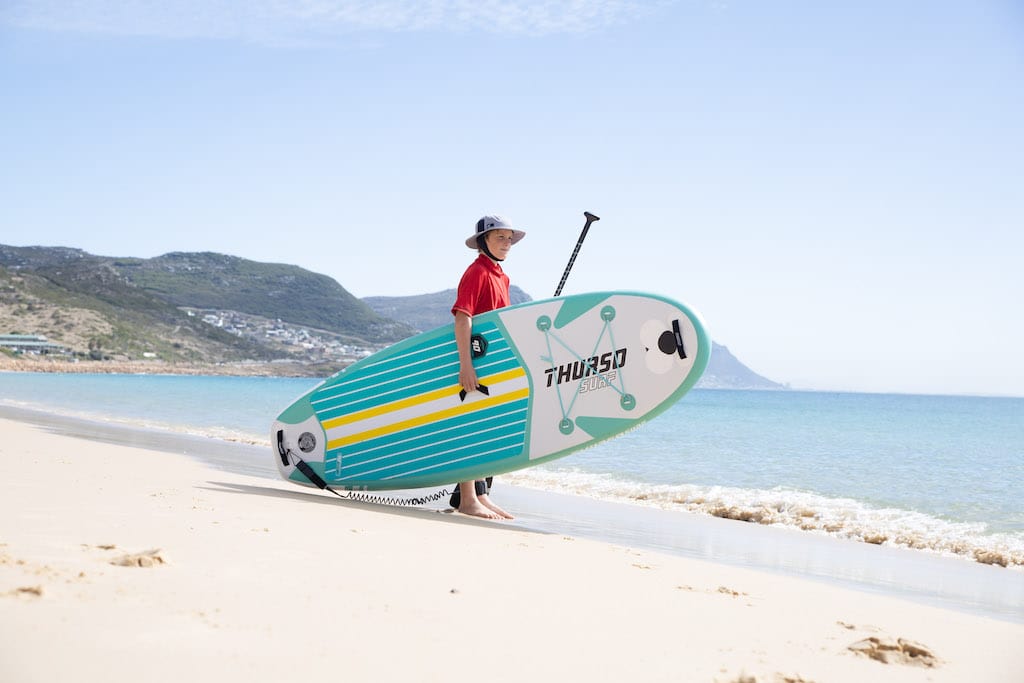



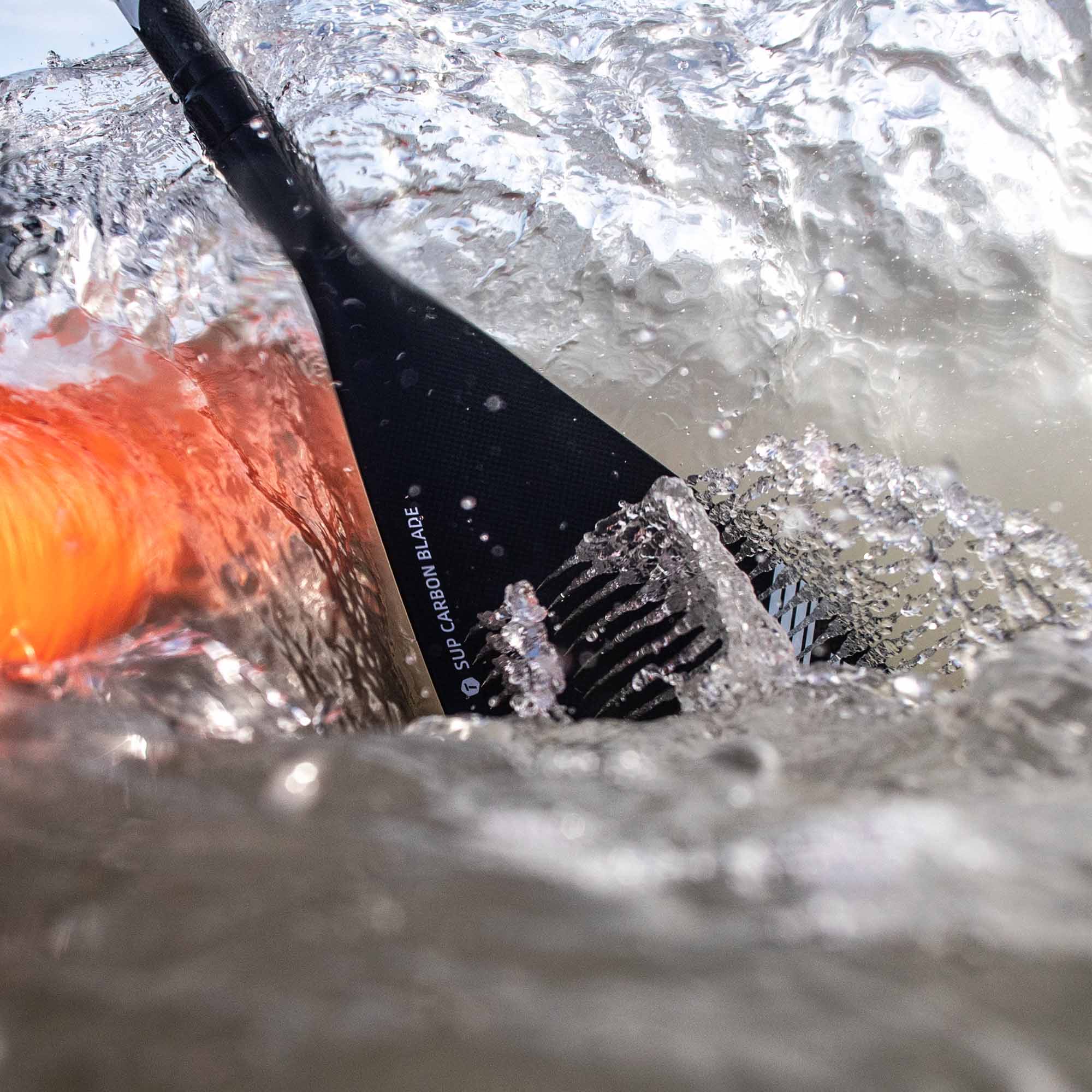
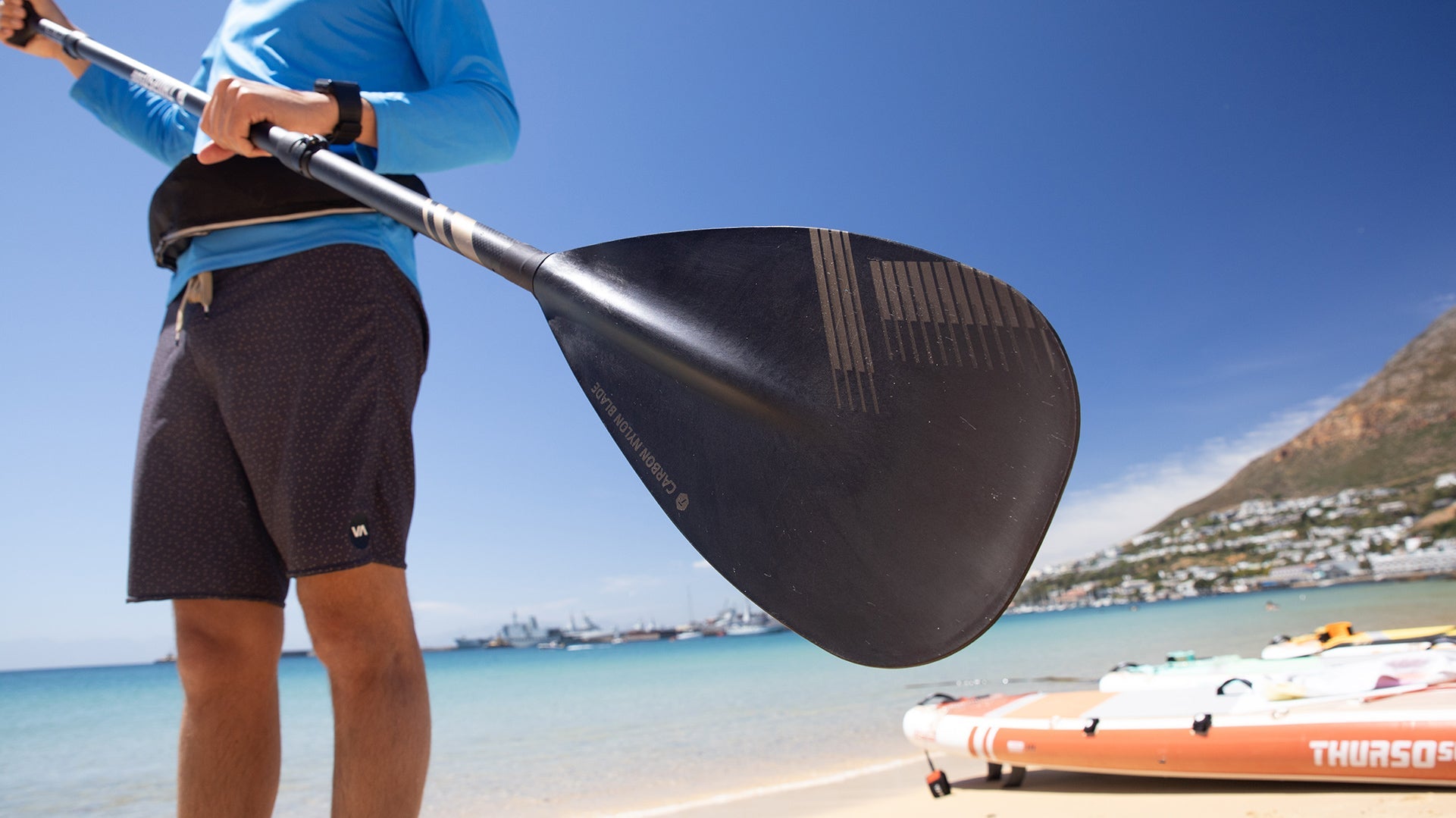


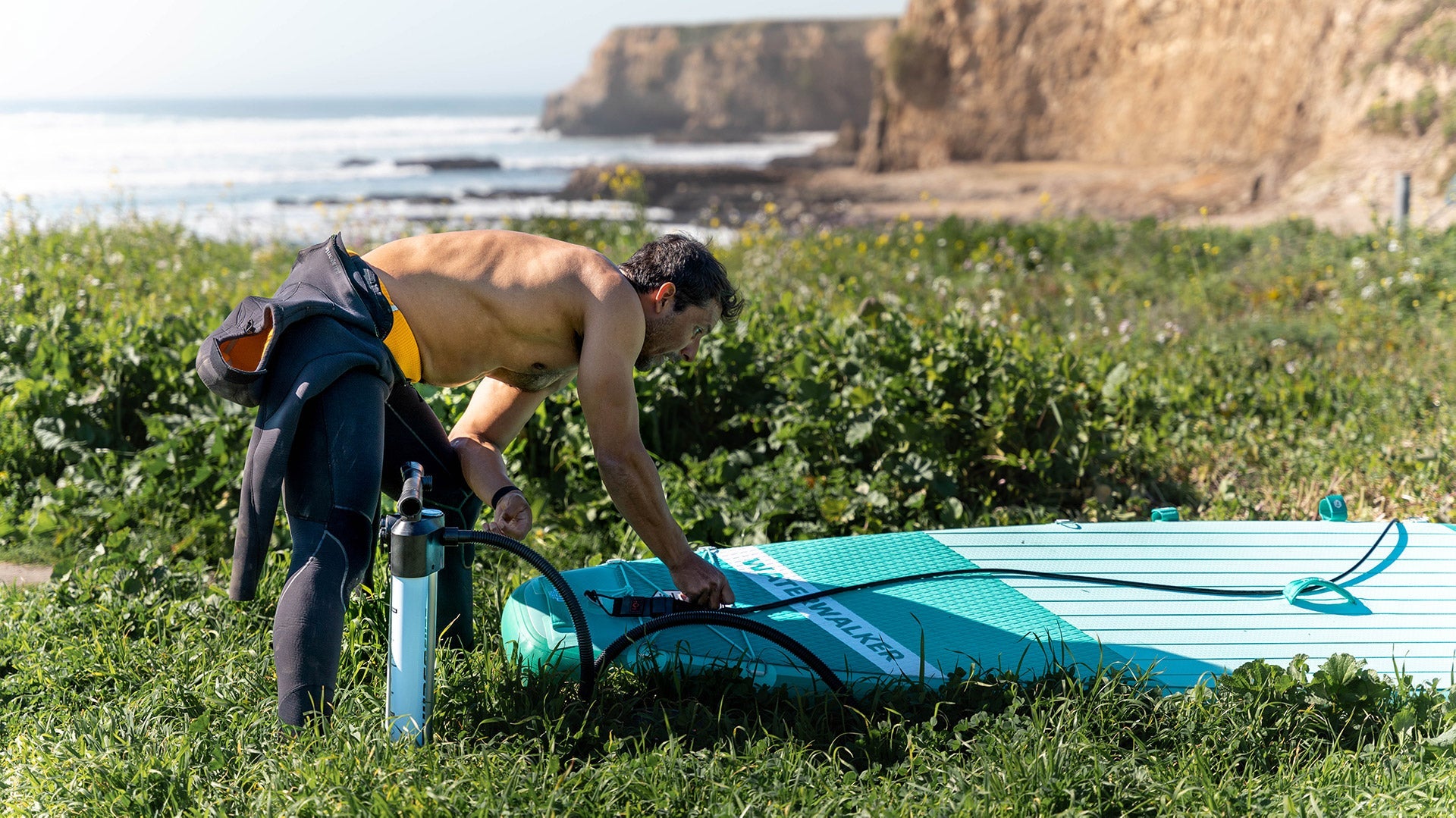
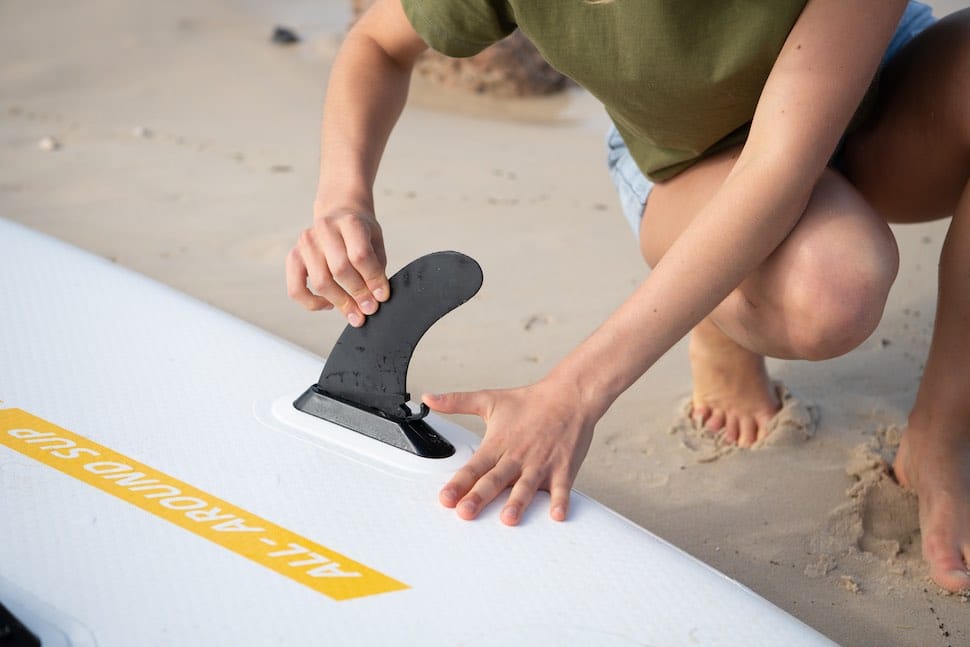
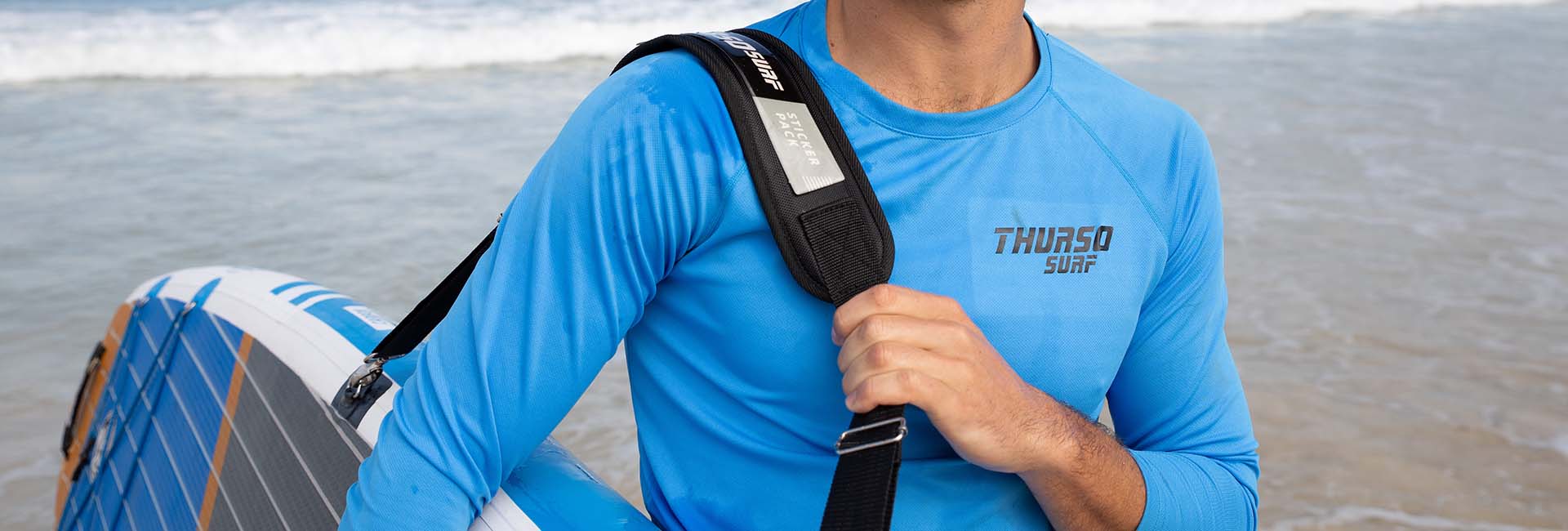




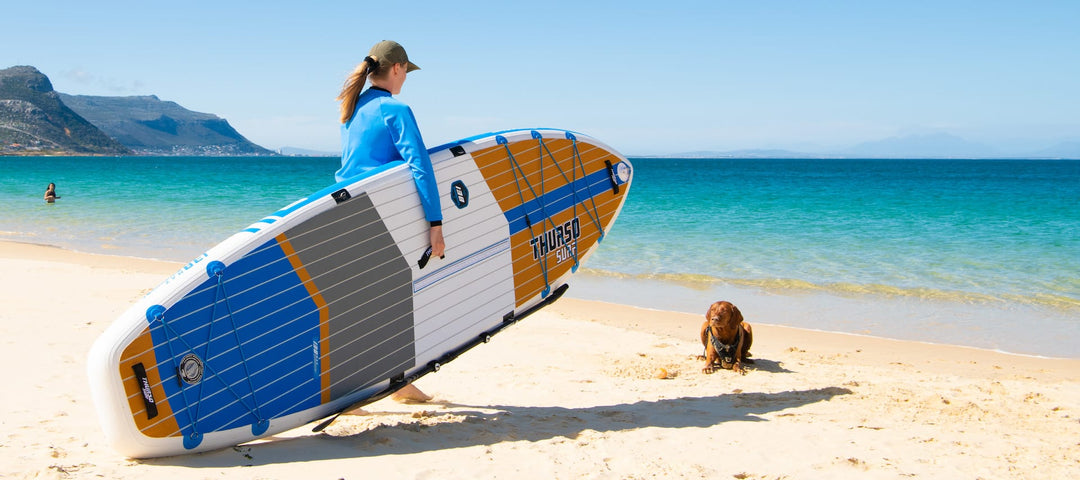
Leave a comment